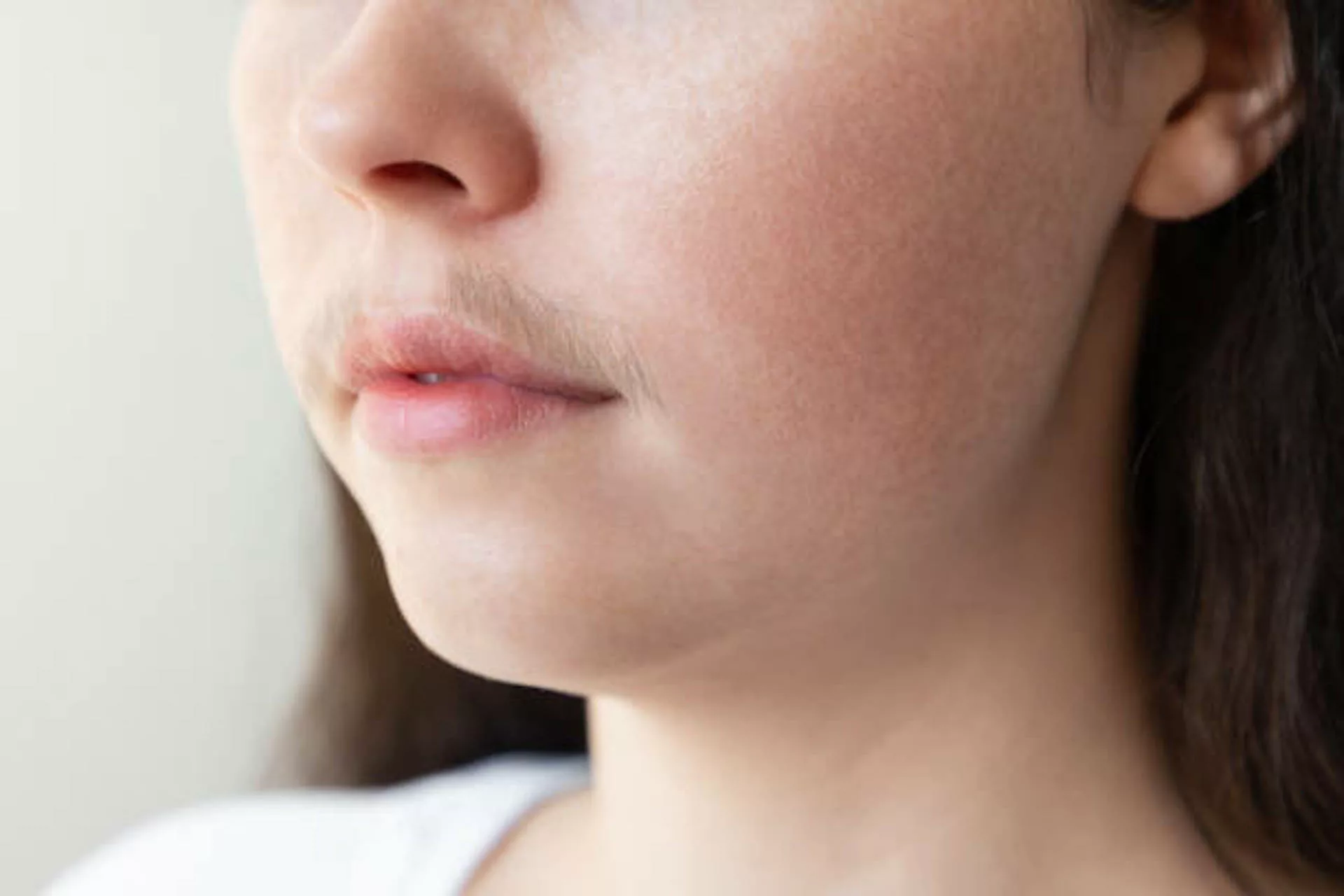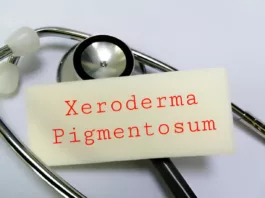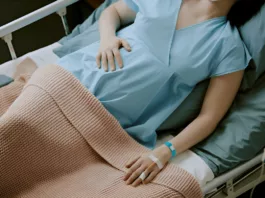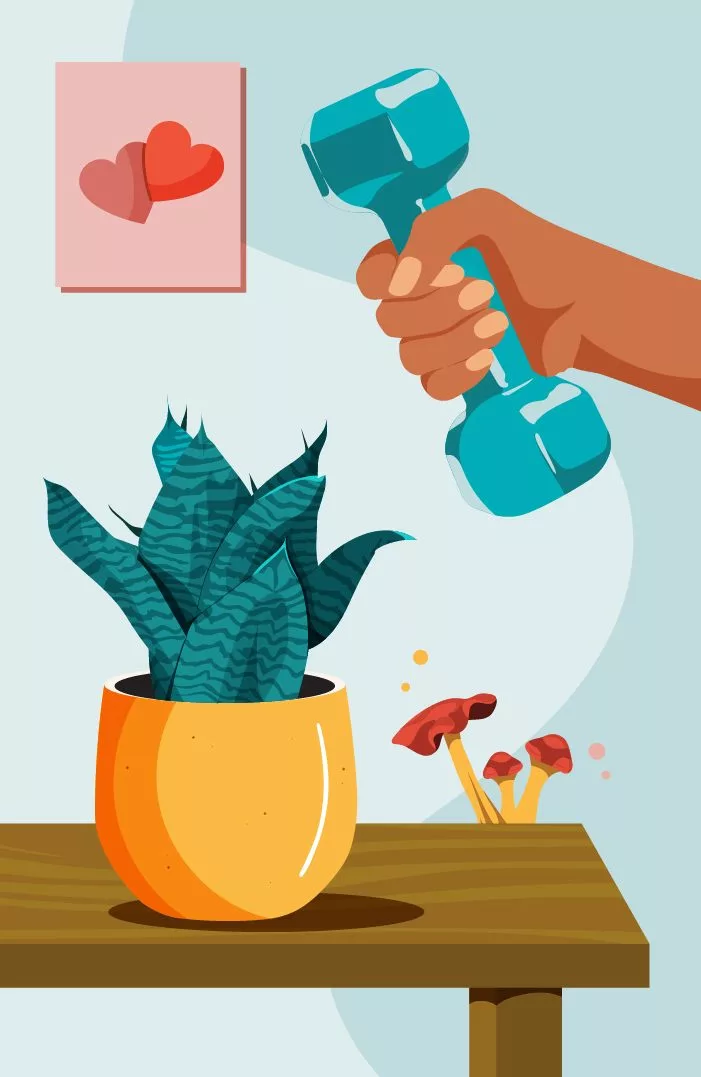Hirsutism is a medical condition in which women develop thick, dark hair in places like the face or chest. It is typically caused by high levels of male hormones or increased sensitivity to them. Hirsutism is considered one of the most frequent hormone-related issues women experience.
What is Hirsutism?
Although the term “hirsutism” is often used to describe general excess hair, in medicine, it specifically refers to this male-pattern hair growth in women. The word “hirsutism” comes from the Latin word “hirsutus”, meaning “hairy” or “shaggy”. Ancient physicians, long before understanding hormones, observed unusual hair growth in women and linked it to internal imbalances.
Epidemiologically, hirsutism affects about 5% to 10% of American women. It tends to be more frequent in certain ethnic groups, like South Asian, Middle Eastern, and Mediterranean women. The disease causes major psychological distress among affected patients.1Tewary, S., Davies, R., & Prakash, A. (2021). Hirsutism. Obstetrics, Gynaecology & Reproductive Medicine, 31(4), 103–108. https://doi.org/10.1016/j.ogrm.2021.02.004
What causes Hirsutism?
Hirsutism happens mainly because of androgens or male hormones, like testosterone and dihydrotestosterone. These hormones turn your fine, soft hair thick and dark. How severe hirsutism is depends on how much of these hormones are in your body and how sensitive your hair follicles are to them. Several conditions can affect these levels and are considered hirsutism causes, such as:
Polycystic Ovary Syndrome/ PCOS:
PCOS is the most common cause of hirsutism. It’s a condition where a woman’s ovaries develop multiple abnormal cysts, and make too many androgens. These extra hormones can cause excessive hair growth. As a woman with PCOS, you might also have irregular periods, acne, and weight gain.
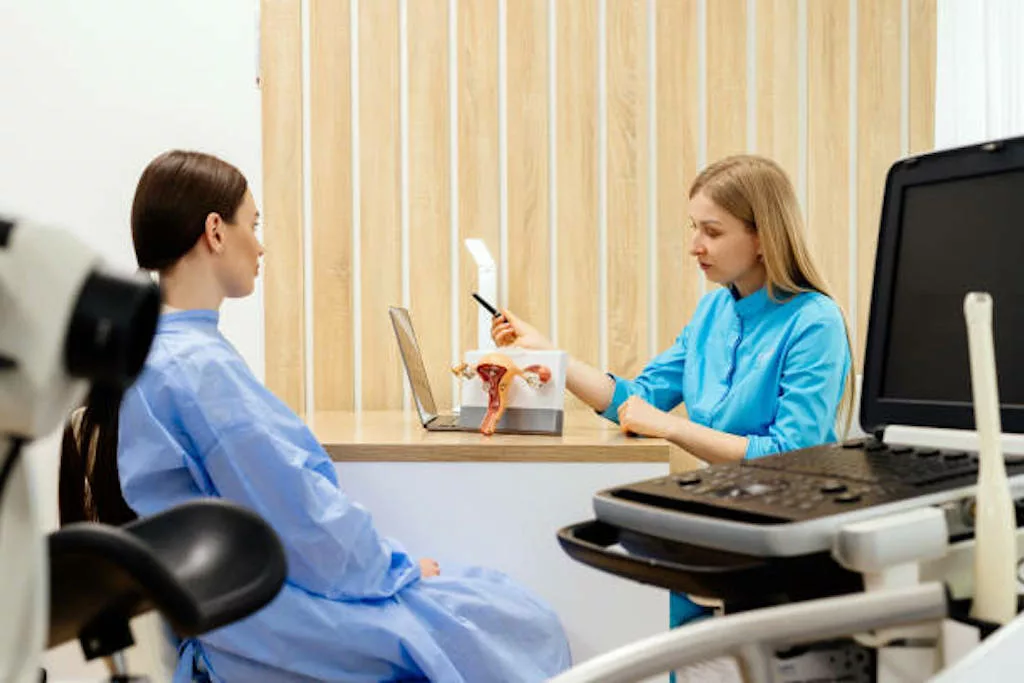
Idiopathic Hyperandrogenism:
In some women, there is no clear reason for excess hair growth, but it happens because their body is more sensitive to the normal levels of androgens. This is called idiopathic hyperandrogenism, in which your body might be producing normal amounts of hormones, but your hair follicles react more strongly to them. This leads to unwanted hair growth.
Adrenal Gland Problems:
Your adrenal glands produce small amounts of male hormones. If there’s a problem with these glands, such as a condition called congenital adrenal hyperplasia or a tumor, the glands may produce too many androgens and cause hirsutism.
Tumors Producing Male Hormones:
Sometimes, tumors in the ovaries or adrenal glands can cause your body to make too many androgens. If the hair growth happens quickly and includes other symptoms, like a deepening voice, it might be due to a tumor that is producing too many male hormones.
Cushing’s Syndrome:
Cushing’s syndrome happens when your body produces too much of a hormone called cortisol, or the “stress hormone”. High levels of cortisol can also increase the production of androgens, which leads to symptoms like excess hair growth, weight gain, and skin problems.
Medications:
Certain medications, especially those with male hormones like testosterone or anabolic steroids, can cause hirsutism. These medications include:
- Anabolic steroids
- Corticosteroids
- Danazol
- Oral contraceptives
- Cyclosporine
- Sodium valproate
- Phenytoin
- Streptomycin
- Diazoxide
- Minoxidil
Genetics:
Sometimes, excess body hair is just in your genes. If other women in your family have a lot of body hair, it might be something you inherit. Genetics are even more important to factor in if you come from specific backgrounds, such as Mediterranean, Middle Eastern, or South Asian ethnicities, where body hair tends to grow thicker and darker.2BODE, D., SEEHUSEN, D. A., & BAIRD, D. (2012). Hirsutism in Women. American Family Physician, 85(4), 373–380. https://www.aafp.org/pubs/afp/issues/2012/0215/p373.html
Symptoms of Hirsutism
The primary symptom of hirsutism is an abnormally excessive growth of dark coarse hair in women. This follows male patterns of hair growth, which may appear in the following areas:
- Upper lip
- Chin
- Chest
- Lower back
- Upper abdomen
- Thighs
- Arms
Associated Symptoms of Hirsutism
Hirsutism can come with several other symptoms, which are often related to an imbalance of male hormones in your body, such as:
- Excessive hair growth negatively affects the mental health of women who have hirsutism, especially in patriarchal societies.
- Acne is common, especially on your face, neck, chest, and back. This happens due to increased oil production from higher androgen levels.
- Irregular periods, or sometimes no periods at all, can occur because hormone imbalances affect your menstrual cycle.
- Thinning hair on your scalp, also called androgenic alopecia, may happen. This causes hair to become finer, or even lead to bald spots.
- Your voice may deepen as the high androgen levels affect your vocal cords.
- An enlarged clitoris can also be a sign of elevated androgens in your body.
- Increased muscle mass, especially in your upper body, may be noticeable. This is also because of higher levels of androgens.
- Darkened skin, particularly in areas with skin folds — your neck, armpits, or groin — may indicate acanthosis nigricans. This is a sign of insulin resistance, which can accompany hormonal issues.3Mihailidis, J., Dermesropian, R., Taxel, P., Luthra, P., & Grant-Kels, J. M. (2017). Endocrine evaluation of hirsutism. International Journal of Women’s Dermatology, 3(1), S6–S10. https://doi.org/10.1016/j.ijwd.2017.02.007
How are Hirsutism symptoms assessed for severity?
Hirsutism can vary in severity. To understand the severity of the hirsutism you have and determine the best treatment, doctors often use a scale called the Modified Ferriman-Gallwey scale, or mFG scale. The mFG scale looks at nine specific areas of your body where male-pattern hair growth typically occurs. These areas include the:
- Upper lip
- Chin
- Chest
- Back
- Abdomen
- Arms
- Thighs
For each of these areas, your doctor will assess how much hair is growing and score it from 0 to 4:
- 0 means no hair at all.
- 1 means a small amount of fine hair.
- 2 means moderate hair growth.
- 3 means thick, coarse hair growth.
- 4 means a lot of dark, thick hair, highly characteristic of male-pattern hair.
After your doctor checks all the areas, the scores are added up to give you a total mFG score.
Mild Hirsutism:
If you have mild hirsutism, your mFG score will usually be between 8 and 15. In this case, the extra hair growth is noticeable but not extreme. The hair may be fine or light and may appear on areas like your upper lip, chin, or lower abdomen.
Mild hirsutism is often linked to conditions like PCOS, which, while causing some discomfort, typically doesn’t pose a serious risk.
Moderate Hirsutism:
With moderate hirsutism, your mFG score will be between 16 and 25. At this level, hair growth is more noticeable and thicker, especially in areas such as the upper lip, chin, chest, or lower abdomen. The hair may also be coarser and more spread out. This can suggest hormonal imbalances or conditions like ovarian or adrenal problems.
Severe Hirsutism:
Severe hirsutism is when the mFG score is higher than 25. At this stage, the hair growth is widespread, very noticeable, and often extremely thick, dark, and coarse. It can affect not only your face and chest but also your back, abdomen, arms, or thighs.
Along with hair growth, other symptoms might include acne, deepening of the voice, or hair thinning. Severe hirsutism can sometimes be linked to more serious conditions like Cushing’s syndrome or hormone-secreting tumors.4Lumezi, B. G., Berisha, V. L., Pupovci, H. L., Goçi, A., & Hajrushi, A. B. (2018). Grading of hirsutism based on the Ferriman-Gallwey scoring system in Kosovar women. Advances in Dermatology and Allergology, 35(6), 631–635. https://doi.org/10.5114/ada.2018.77615
How is a Hirsutism diagnosis established?
Hirsutism is easily visible, but it can be caused by a variety of causes. So, a diagnosis is established clinically, and the causes are then confirmed on further lab investigations.
History & Physical Exam:
When you visit your doctor for hirsutism, they will first want to know when the extra hair growth started, how fast it has been happening, and if your periods are regular. They may also ask if you have family members with similar problems.
Next, they will do a physical exam. They will check the pattern and amount of hair growth using the mFG scale. They will also look for other associated signs of hirsutism, such as weight gain, acne, and changes in your voice.
Lab Tests:
To start, general blood tests like a CBC and a basic metabolic panel of LFTs, RFTs, and serum electrolytes, as well as infectious testing, are performed. Then, tests are done to help rule out other conditions that might be causing your excess hair growth:
- A key test for diagnosing hirsutism is checking your testosterone levels. Higher levels could point to endocrine conditions like PCOS. If your testosterone levels are higher than 6.94 nmol/L or 200 ng/dL, you’ll be referred to an endocrinologist for a more detailed evaluation.
- The free androgen index or FAI is another test that looks at your testosterone more accurately. It’s useful because it accounts for variations in a protein called sex hormone-binding globulin, which can impact testosterone measurements.
- If your blood DHEA, a hormone produced by your adrenal glands, is high, it might mean your adrenal glands are overproducing male hormones.
- Androstenedione levels help your doctor figure out if your excess hair growth is caused by your ovaries or adrenal glands, as this hormone is mostly produced by your ovaries.
- Elevated cortisol on 24h cortisol testing can help doctors diagnose Cushing’s syndrome.
- A thyroid profile may be ordered to investigate any thyroid disorders causing your symptoms of hirsutism.
- If your doctor thinks you have excessive growth in the lining of your uterus or endometrial hyperplasia (which can happen in PCOS), a biopsy might be recommended to check for abnormal growth of the uterine lining
Imaging:
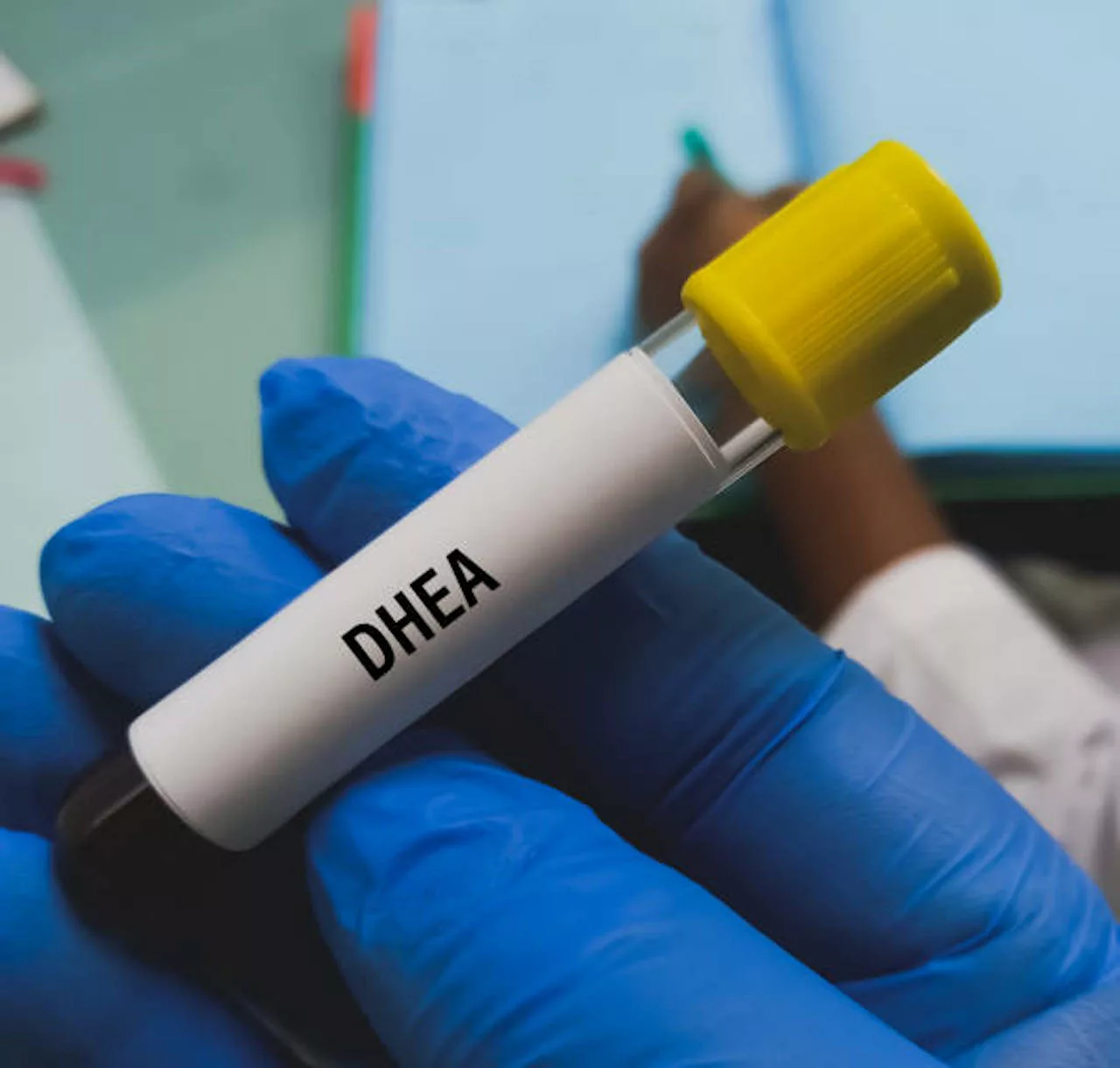
Imaging can be performed to find out if any tumors, cysts, or masses are causing symptoms of hirsutism. A pelvic ultrasound is often used to check for PCOS. Meanwhile, a CT or MRI scan can help with tumors, such as a pituitary adenoma.5Wissem Hafsi, & Kaur, J. (2023, May 3). Hirsutism. Nih.gov; StatPearls Publishing. https://www.ncbi.nlm.nih.gov/books/NBK470417/
What is the treatment for Hirsutism?
Hirsutism is usually treated with a combination of hair removal, as well as targeted therapies for what’s causing the hair growth in the first place.
Hair Removal:
Hair removal for hirsutism can include several options based on your personal preference as well as the severity of the condition:
- Shaving is a quick, easy method for temporary hair removal in hirsutism, though it needs frequent upkeep.
- Waxing and plucking remove your hair from the root, offering longer-lasting results than shaving.
- Laser hair removal targets your hair follicles by using focused light beams. It reduces hair growth over time. Multiple sessions are needed for long-term effects. IPL is a less focused form of laser therapy that can treat larger areas of hair growth over time.
- Electrolysis is an FDA-approved permanent hair removal method using a small current to destroy your hair follicles.
- Depilatory Creams are chemical creams that break down hair at your skin’s surface for temporary hair removal.
- Threading is a technique using a twisted cotton thread to remove hair at the root, which is especially useful for the face.6Pathania, Y. S., Budania, A., Rafi, S., & Kumar, A. (2023). Psychosocial and financial impact of facial hair among female patients of hirsutism: A cross‐sectional study. Journal of Cosmetic Dermatology, 22(6), 1906–1910. https://doi.org/10.1111/jocd.15655
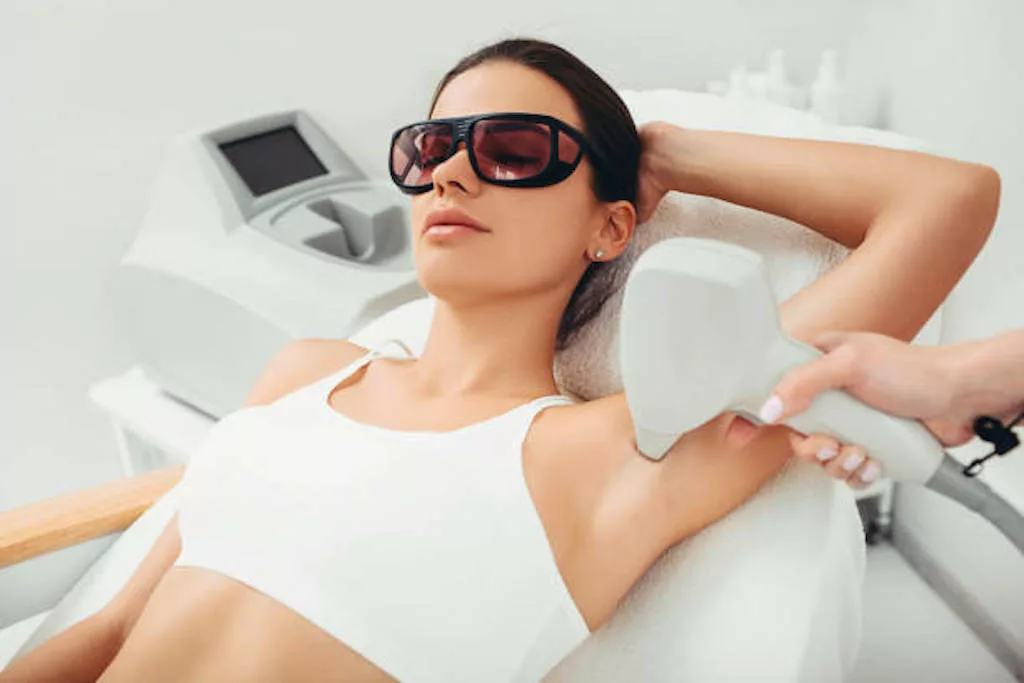
Topical Medications:
Topical Medications and ointments are applied directly to your skin to help reduce the growth or visibility of hair. Examples include:
- Eflornithine cream slows down hair growth by blocking the enzymes responsible for hair production, primarily used for facial hair.
- Topical retinoids can reduce hair follicle size and can complement other treatments.
- Corticosteroid creams are used to manage skin irritation or inflammation that can sometimes be associated with hirsutism.
Oral Medications:
Depending on the type of underlying cause, several oral medications can regulate hormone levels that contribute to hirsutism. However, sometimes these medications can themselves result in excessive growth. All drugs for hirsutism need to be carefully titrated and taken only as advised by a doctor:
- Birth control pills regulate your hormones to reduce testosterone levels. They can thereby reduce hair growth.
- Clomiphene citrate is a fertility medication that can balance hormones and may reduce hair growth in women with PCOS.
- Anti-androgens like spironolactone and flutamide block the effects of male hormones, which reduces hair growth in hirsutism.
- Finasteride is used to block the conversion of testosterone into a more potent form. When testosterone is less effective, you have less male-pattern hair growth.7Lakryc EM, Motta EL, Soares JM Jr, Haidar MA, de Lima GR, Baracat EC. The benefits of finasteride for hirsute women with polycystic ovary syndrome or idiopathic hirsutism. Gynecol Endocrinol. 2003 Feb;17(1):57-63. PMID: 12724020.
Surgery:
In cases where medical treatments have not been effective, surgical options may be necessary. Ovarian drilling is typically used for women with PCOS who do not respond to medications. It involves creating small holes in the ovaries to reduce androgen production and improve fertility. In other cases, tumors in your adrenal glands or pituitary gland may need to be removed surgically.8Agrawal, N. (2013). Management of hirsutism. Indian Journal of Endocrinology and Metabolism, 17(7), 77. https://doi.org/10.4103/2230-8210.119511
What to do for Hirsutism self-care?
It’s a good idea to practice self-care for hirsutism on a regular basis. This helps keep your symptoms in check and makes treatment more effective:
- If you are obese, you may notice improvements in your hormone balance after shedding some pounds.
- Eating adequate fruits, vegetables, and whole grains can also balance your hormones and support overall health in hirsutism patients.
- Every day, physical activity can help you manage weight and improve your body’s response to insulin, which is a cause of excess hair.
- Drinking spearmint tea (after consulting with your doctor) may help lower testosterone levels, which could reduce hair growth.
- If you have hirsutism, you need to keep your skin soft. You also need to prevent ingrown hairs and skin irritation caused by regular hair removal. This is achieved through moisturizing regularly, exfoliating gently, and taking good care of your skin with gentle skin products.
- Reducing stress with practices like yoga or deep breathing can help improve your hormones, and thus, hirsutism.
Virilization vs Hirsutism
Virilization and hirsutism both involve symptoms related to excess androgens in women. Hirsutism refers specifically to the excessive hair growth in areas where men typically grow hair. It involves the transformation of fine or vellus hair into thicker and darker terminal hair due to higher androgen levels or increased sensitivity to them. Virilization, on the other hand, is a more severe form of androgen excess. It not only includes hirsutism but also involves the development of other masculine characteristics in your body. These include a deepened voice, enlargement of your clitoris, male-pattern baldness, and muscle growth.
Conclusion
Hirsutism refers to the excessive, male-pattern hair growth in women, often associated with underlying hormonal imbalances. The underlying cause of hirsutism needs to be treated to get rid of symptoms. Treatment includes healthy lifestyle changes, hormonal medication, as well as cosmetic hair removal methods.
Refrences
- 1Tewary, S., Davies, R., & Prakash, A. (2021). Hirsutism. Obstetrics, Gynaecology & Reproductive Medicine, 31(4), 103–108. https://doi.org/10.1016/j.ogrm.2021.02.004
- 2BODE, D., SEEHUSEN, D. A., & BAIRD, D. (2012). Hirsutism in Women. American Family Physician, 85(4), 373–380. https://www.aafp.org/pubs/afp/issues/2012/0215/p373.html
- 3Mihailidis, J., Dermesropian, R., Taxel, P., Luthra, P., & Grant-Kels, J. M. (2017). Endocrine evaluation of hirsutism. International Journal of Women’s Dermatology, 3(1), S6–S10. https://doi.org/10.1016/j.ijwd.2017.02.007
- 4Lumezi, B. G., Berisha, V. L., Pupovci, H. L., Goçi, A., & Hajrushi, A. B. (2018). Grading of hirsutism based on the Ferriman-Gallwey scoring system in Kosovar women. Advances in Dermatology and Allergology, 35(6), 631–635. https://doi.org/10.5114/ada.2018.77615
- 5Wissem Hafsi, & Kaur, J. (2023, May 3). Hirsutism. Nih.gov; StatPearls Publishing. https://www.ncbi.nlm.nih.gov/books/NBK470417/
- 6Pathania, Y. S., Budania, A., Rafi, S., & Kumar, A. (2023). Psychosocial and financial impact of facial hair among female patients of hirsutism: A cross‐sectional study. Journal of Cosmetic Dermatology, 22(6), 1906–1910. https://doi.org/10.1111/jocd.15655
- 7Lakryc EM, Motta EL, Soares JM Jr, Haidar MA, de Lima GR, Baracat EC. The benefits of finasteride for hirsute women with polycystic ovary syndrome or idiopathic hirsutism. Gynecol Endocrinol. 2003 Feb;17(1):57-63. PMID: 12724020.
- 8Agrawal, N. (2013). Management of hirsutism. Indian Journal of Endocrinology and Metabolism, 17(7), 77. https://doi.org/10.4103/2230-8210.119511

